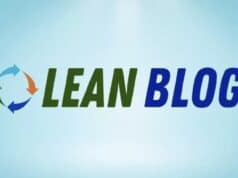by Mike Lopez
Lean in Science. Cookie cutters are really good at cutting cookies, but you can't bake a cake with them. This is my general attitude towards the tools-based approach to Lean. For the past couple years, I've been involved in an interesting Lean transformation. We're trying to apply it to science.
To prepare for implementation, I took our corporate black belt training and also attended the Lean Experience at the Lean Learning Center. In the course of my study, I found Spear and Bowen's 1999 HBR article, “Decoding the DNA of the Toyota Production System.” It has since become my favorite piece of Lean literature. You can read a review here, but I highly recommend that you buy it.
Spear and Bowen's extensive analysis of the Toyota Production System extracted four basic rules behind all the various Lean tools. The rules:
Rule 1: All work shall be highly specified as to content, sequence, timing, and outcome.
Rule 2: Every customer-suuplier connection must be direct, and there must be an unambiguous yes-or-no way to send request and receive responses.
Rule 3: The pathway for every product and service must be simple and direct.
Rule 4: Any improvement must be made in accordance with the scientific method, under the guidance of a teacher, at the lowest possible level in the organization.
The real gem for people in my industry is Rule 4. Scientists are a notoriously skeptical bunch. When you tell them that they will benefit from a system that is used to make cars, every red flag in the room goes up. I often hear statements like, “We are not a factory, so lean doesn't apply to us.” A scientist can tell me that Lean doesn't apply to research, but he can't tell me that the scientific method doesn't apply to research. In fact, when I tell him that what we are doing is applying the scientific method more rigorously, what else can a scientist do but applaud?
Thanks to a reframing of what it means to be Lean, we are crushing that cookie cutter and driving, what I call, “Lean Spirit(TM)” into the organization. With Lean Spirit, traditional countermeasures don't matter. We've got the rules that allow us to create custom countermeasures that fit our problems. Lean Spirit is the way to become your own Toyota, not to become a copy of Toyota. Thank you Drs. Spear and Bowen.
What do you think? Please scroll down (or click) to post a comment. Or please share the post with your thoughts on LinkedIn – and follow me or connect with me there.
Did you like this post? Make sure you don't miss a post or podcast — Subscribe to get notified about posts via email daily or weekly.
Check out my latest book, The Mistakes That Make Us: Cultivating a Culture of Learning and Innovation:







I also hear sometimes “we’re in healthcare, what can Toyota teach us?” But, once I explain the general principles, like the Spear “DNA” framework” or the five principles of the book “Lean Thinking”, then they start to get it.
[…] written about the four rules of Lean before. I have been thinking about how they apply to marriage. To refresh those of you who […]
[…] written about the four rules of Lean before. I have been thinking about how they apply to marriage. To refresh those of you who […]